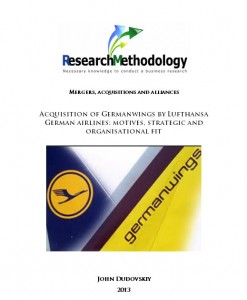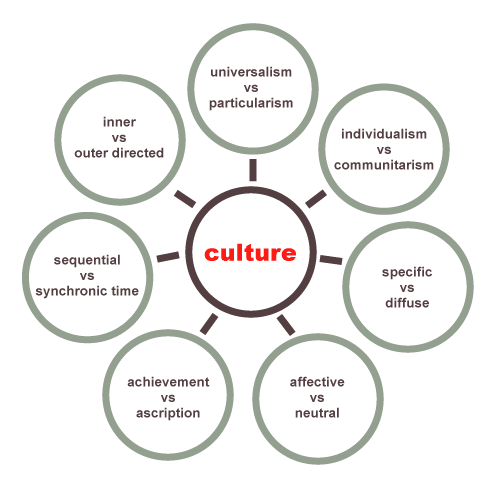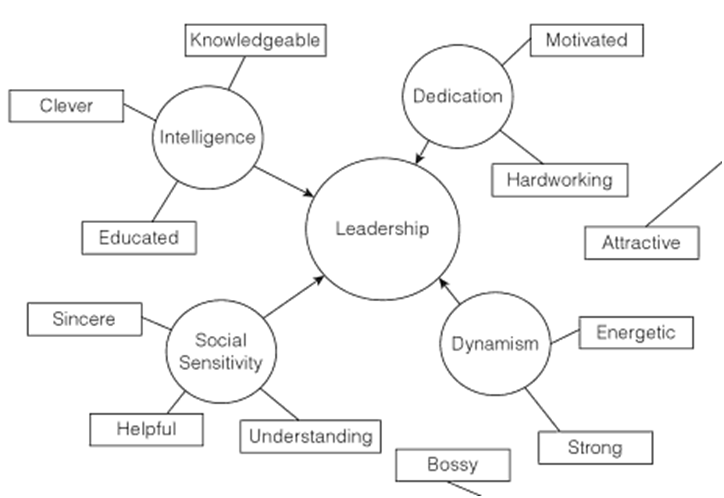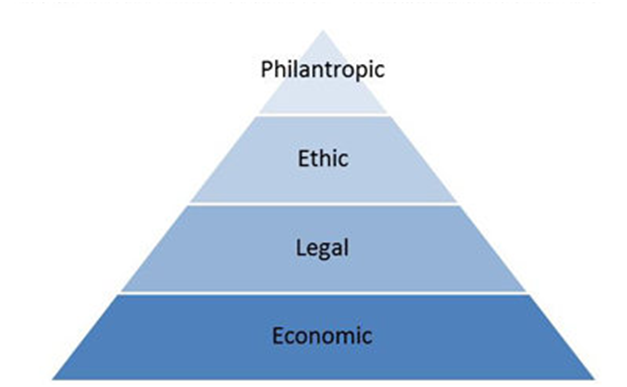Posts by John Dudovskiy

Mergers, acquisitions and formation of alliances are commonplace in global airline industry and they are fuelled by the search of competitive advantages in order to achieve long-term growth. However, the implementation of mergers, acquisitions and formation of strategic alliances in practice can be associated with a set of complex challenges that might include differences in organisational culture, clash of personalities within top level management, lack or absence of strategic fit between the two companies and others. Lufthansa Group is a global airline company that employs more than 120,000 workforces that have contributed to generate 713 million EURO through serving 100.6 million passengers during the year of 2011 alone (Annual Report, 2011). Germanwings is a budget airline company that employs 1355 members of staff and served 7.52 million customers in 2011 offering flights to more than 90 destinations with 33 Airbus A 319 airplanes (Facts and Figures, 2013, online). Germanwings is wholly owned by Lufthansa since 2009. This report investigates a range of business issues related to the acquisition of the budget airline Germanwings by Lufthansa German Airlines in 2009. The report starts with analysis of motives for choosing acquisition method among other alternatives by Lufthansa. This is followed by discussions of strategic and organisational fit between Lufthansa and Germanwings. Moreover, this report addresses potential gains and risks faced by Lufthansa due to the acquisition of Germanwings. The report is concluded with assessing outcomes relative to expectations in relation to this specific airline acquisition. 1. Introduction 1 2. The Motives for Choosing Acquisition Method by Lufthansa 2 2.1 Short Time Required to Complete the Acquisition 2 2.2 Willingness to Increase the Market Share 3 2.3 Overcoming Entry Barrier in Budget Airline Sector 4 2.4 Easiness of Integration 4 3. The Strategic and Organisational Fit between Lufthansa and Germanwings 5 4. The…

Leadership styles exercised in two global companies – Microsoft, a global software corporation based in Washington and Apple, consumer electronics and software manufacturer headquartered in California can be compared in detailed manner. Microsoft can be mentioned as one of the stark case studies, where democratic leadership style of its founder and former CEO, Bill Gates contributed to the global success of the company making Bill Gates the richest person in the world for several years. There was a little or no change in leadership style when Steve Ballmer took over as CEO in 2000, with employees being involved in strategic decision making. On the contrary, there is a consensus amongst business researchers that late Apple CEO Steve Jobs exercised autocratic leadership style with lack of concern for employee engagement in strategic decision making (Isaakson, 2011). Moreover, Steve Jobs famously dismissed marketing research as a waste of time, stating that customers did not know what they wanted, and this fact further emphasises his autocratic leadership style. According to Steve Jobs, rather than spending large sums of money on marketing research and involving employees to discuss research findings, organisational leaders need to be engaged in developing innovative products and add innovative features in existing products that people would like to purchase (Isaakson, 2011). It is important to note that despite large differences between Microsoft and Apple leadership styles as discussed above, both organisations have been able to be highly successful in global scale. Accordingly, rigid generalisations about effective and ineffective leadership styles needed to be avoided. In other words, each individual leadership style can be effective or ineffective depending on a wide range of factors such as personality, skills and competencies of the leader, organisational culture, specifications of the industry, level of education of employees etc. Amazon.com Inc. Report contains the application…

There are set of factors that impact employee behaviour in direct and indirect ways. These factors can be internal to organisation such as work culture, leadership, job responsibilities relationships with colleagues etc., or external such as the extent of work-life balance, changes in personal circumstances, employee cultural background, the extent of interpersonal skills etc. Work culture can be defined as “applying the general characteristics of culture to the specifics of how people work at a point of time and place” (Moran et al., 2007, p. 30) and work culture is one of the major factors impacting employee behaviour. Work culture is usually set by founder(s) of organisation, but it can change over a course of time. In simple terms, in order to survive employees have to fit in the current work culture. The quality of organisational leadership has also great impact on employee behaviour in a way that effective organisational leaders can inspire and motivate employees for greater performance, at the same time when ineffective leaders can cause employee knowledge, skills and competencies not being fully utilised. Employee job responsibilities can be mentioned as important factor impacting employee behaviour because extensive range of roles and responsibilities can cause burnout for employees with all the negative consequences. In personal level, the extent of work-life balance of employees has direct and significant implications on their behaviour. Specifically, lack of work-life balance is most likely to have negative implications on employee behaviour and performance in various levels. Similarly, employee-specific factors such as cultural background and interpersonal skills and competencies greatly affect employee behaviours. Therefore, managers need to take into account these differences when dealing with each individual employee. References Moran, R.T., Harris, P.R. & Moran S.V. (2007) “Managing Cultural Differences: Global Leadership Strategies for the 21st Century” 7th edition, Routledge

Generally, organisational structures are divided into three types: functional, divisional and matrix. Functional organisational structure is associated with dividing organisation into different departments such as IT, finance, marketing according to their functions. Divisional organisational structure, on the other hand, relate to organisations where divisions are formed on the basis of geographical locations or product lines. In this type of organisational structure each division possesses its own departments such as IT, finance, marketing and others. Matrix organisational structure comprises elements of functional and project-based organisations. Employees in this type of organisations report to two bosses – project leaders and heads of functional departments.

Literature review has identified a set of factors that are able to trigger cultural changes. These factors causing cultural change have been found as leadership change, technological developments, mergers and acquisitions and others. Discussions of each of these factors in greater details are provided below. 1. Leadership Change Authors such as Beer (2012), Christopher (2012) and Morgan (2012) agree that changes in top level management can result in changes in organisational culture. According to Beer (2012), initially, organisational culture is set by the founder of the organisation, but the initial culture set by founders might be subjected to changes due to the impact of a wide range of factors. At the same time, Beer (2012) acknowledges that this argument relates to private sector organisations at a greater extent compared to public sector organisations. Nevertheless, Beer (2012) and Christopher (2012) argue that change at organisational leadership causes changes to organisational culture to a certain extent. Christopher (2012) further reasons that the extent to which organisational culture is subjected to change to due to change in leadership depends on a set of factors such as the difference between the new and old strategy to achieve organisational objectives, personal traits and characteristics of a new leader etc. 2. Technological Developments The extent of technological developments that have especially accelerated during the last two decades have been found as a major factor causing cultural changes by Maude (2011) and Davel et al. (2013). Maude (2011) mentions the instances of using mobile phones in public to illustrate the impact of this factor. Specifically, according to Maude (2011) while it was perceived to be a rather rude behaviour to engage in lengthy conversations in mobile phones in public places such as public transport only twenty years ago, nowadays such behaviour is generally perceived…
By John Dudovskiy
Category: Change

Trompenaars and Hampden-Turner Cultural Dimensions consists of universalism versus particularism, individualism versus collectivism, achievement versus ascription, neutral versus affective, specific versus diffuse, internal versus external, and time orientation. Universalism versus particularism relates to the extent of importance of formal rules and procedures over circumstances and relationships. Universalistic cultures rely on formal rules and regulations to govern various aspects of life, whereas members of particularistic cultures tend act according to circumstances. Bhattacharyya (2010) links this specific cultural dimension to the levels of paperwork and bureaucracy in organisations. According to Bhattacharyya (2010), the levels of organisational bureaucracy are usually greater in organisations with universalistic cultures compared to particularistic organisations. Individualism versus collectivism is similar to relevant cultural dimension proposed by Hofstede as discussed above. In individualistic cultures interests of individuals usually prevail over the interest of the group, whereas in collectivistic organisations the whole teams, rather than individuals are credited with organisational successes, as well as, failures. Achievement versus ascription marks the level of tolerance of society towards the pattern of distribution of power and status amongst members of society. This cultural dimension is quite similar to power distance cultural dimension presented by Geert Hofstede. In societies and organisations with achievement-oriented cultures power, status and other befits are provided for individuals that are high achievers. In ascription-oriented organisations, on the other hand, power and management positions are given on the basis of family backgrounds, age, gender and others. Moran et al. (2011), Maude (2011) and a range of other authors present convincing arguments about the advantages of achievement-oriented organisational cultures over ascription-oriented organisations in terms of increasing the level of effectiveness in achieving organisational objectives. Specifically, employees in achievement-oriented organisations are found to be better motivated to contribute to the achievement of organisational objectives compared to employees in ascription-oriented organisations. Neutral versus affective…

The literature review has identified the main differences between private and public sector organisations to relate to organisational aims and objectives, organisational stakeholders and stakeholder expectations, the levels of public scrutiny, external environment and its impacts and sources of motivation for employees. 1. Differences in Organisational Aims and Objectives According to Kassel (2010), Chaston (2011) and others, organisational aims and objectives represent the main point for difference between public and private sector organisations. The main objective for the majority of private sector organisations relates to maximising financial returns for investors, whereas the majority of organisations in public sector have been found to pursue objectives other than profit maximisation, such as providing various services and products for the public (Kassel, 2010, Chaston, 2011). The level of clarity of organisational objectives has emerged as an additional difference between public and private sector organisations. Specifically, according to Wright et al. (2012), while the main or even only objective for private sector organisations – maximising profits is straightforward, and therefore clearly understood by employees at all levels, the perceptions of goal clarity amongst public sector employees tends to be lower. 2. Stakeholders in Public Sector and Private Sector Organisations and Their Expectations The type of stakeholders and stakeholders’ expectations has emerged as another point of stark difference between private and public sector organisations (Chaston, 2011). Stakeholders can be defined as “any party or group who is able to influence (affect) or be influenced (affected) by the organisation and its activities” (Brink and Berndt, 2009, p.156). Stakeholders can be divided into two categories: internal and external (Parhizgari and Gilbert, 2004, Crosby and Bryson, 2005). Internal organisational stakeholders have direct relationship with an organisation and they are directly impacted by performance of the organisation. External stakeholders, on the other hand, may not be impacted…

Reasonable amount of works have been devoted to the study of leadership skills and capabilities. According to Bertocci and Bertocci (2009), one of the most basic and necessary leadership qualities relates to the development of organisational vision in an effective manner and ensuring that employees are motivated by this vision. Ricketts and Ricketts (2011) consider the ability to influence others as a core leadership quality. At the same time, Ricketts and Ricketts (2011) accept that influencing can be done in a positive or negative manner and discusse the advantages of positive influencing as compared to negative influencing in long-term perspective. Similarly, the ability to motivate other people is seen by Davies and Brundrett (2010) as one of the most important trait for leaders. Confirming this point, Obolensky (2010) finds positive correlation between the level of effectiveness of organisational leaders, and the use of intangible motivational tools. In other words, according to Obolensky (2010) the most effective leaders use tangible motivational tools to a minimum extent, effectively appealing to inner psychological and career development needs of their subordinates. Differences between tangible and intangible motivators and their implications on leadership practices need to be explained in greater detail in order to further clarify the point above. Schermerhorn et al. (2011) confirm that tangible motivational tools include elements present in physical terms that can be obtained and/or experienced such as money, holidays, free meal, etc. Intangible motivational tools, on the other hand, include prestige, verbal and written appreciations from management, the provision of various titles etc (Griffin, 2011). Forsyth (2009) covers a greater range of leadership skills and capabilities in his work and represents interrelationships within leadership skills and capabilities in the following manner: Important leadership skills and capabilities Source: Forsyth (2009) Specifically, leadership skills and competencies are divided by Forsyth (2009) into…

Leadership styles are generally divided into four categories: autocratic, consultative, democratic, and laissez-faire (Daiels, 2004, Davies and Brundrett, 2010). The following table contains the description of each style, relevant leader behaviours and potential impact on employees: Style Description Leader behaviours Potential impact on employees Autocratic Basic premise: leader knows best. Communication flows downwards Controlling Directive Makes all decisions and solves all problems Issues commands Hostility Rebellion Consultative Basic premise: leader informs members of best concepts Directive approach; teacher of information Increases knowledge levels Democratic (Participative) Basic premise: every member should have input. Communication is open and mutual Acts as a facilitator. Serves as a resource person Encourages members’ active participation Improved productivity More opportunity for personal growth Increased cooperation and teamwork Laissez-Faire Leadership responsibilities are assumed by group. Almost any behaviour by group is permissible due to the leader’s lack of limit-setting and stated expectations Passive, non-directive approach. Provides little, if any support, guidance, or feedback. Sets no limits Unmet tasks Relationship needs of group members ignored Apathy Descriptions of leadership styles, leader behaviours, and potential impact on employees Source: Daniels (2004) The majority of authors stress the advantages of democratic leadership style over autocratic leadership at various levels. Interestingly, Dukakis et al. (2010) argue that the negative impacts of autocratic leadership are starkly evident in private sector organisations compared to public sector organisations. To explain this point, Dukakis et al. (2010) reason that leadership issues in private sector organisations associated with the application of autocratic leadership style would be reflected in the level of revenues, whereas leadership ineffectiveness in public sector organisations might be tolerated for longer periods of time. Davies and Brundrett (2010) warn not to dismiss autocratic leadership style as totally inappropriate referring to specific cases where autocratic leadership might prove to be effective. Davies and Brundrett…

The concept of CSR Pyramid, proposed by Carroll (1983) divides business obligations into four levels, explaining requirements of obligations in each level, as well as their importance. Economic responsibility is considered to be core responsibility of the business and it relates to profit maximisation. Economic responsibility is mainly self-regulatory in a way that if a business entity neglects or fails to meet its economic responsibilities it is just a matter of time before the business becomes a history. Legal responsibility of a firm relates to adhering to rules and regulations of the respective government. Meeting legal responsibilities is critically important for businesses and the case study of Enron can be mentioned to explain the potential negative consequences of abusing legal responsibilities. Ethical responsibilities for a business entity relate to certain responsibilities that go beyond basic economic and legal requirements for a business entity. Ethical responsibilities are usually expected by organizational stakeholders, but usually there are no government laws and regulations to enforce these responsibilities. However, each case is different and there might be instances where governments may interfere in relation to ethical issues. Philanthropic responsibility is understandably placed at the highest level of responsibilities because it is not generally expected and mainly initiated for advertisement and public relations purposes. Philanthropic acts engaged by businesses may include sizable donations to various causes or local communities, or contributing to society in other ways. Although Carroll’s CSR Pyramid is widely considered to be a substantial contribution to the development of the field of CSR, it has been criticized by various authors. Hockerts et al. (2008) criticise this framework by arguing that there is no need to represent CSR as a hierarchy. In other words, according to Hockerts et al. (2008), unlike Maslow’s Hierarchy of Needs, in Carroll’s CSR Pyramid there are weak or…
